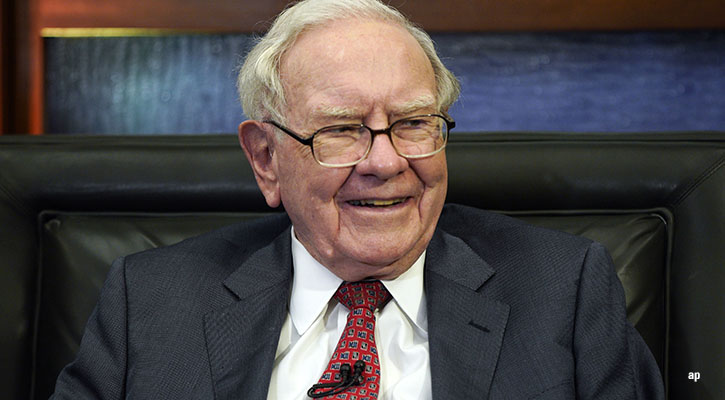
While major U.S. indices have shown remarkable resilience in the wake of the pandemic, the picture can be misleading. Indeed, Steve MacMillan, a value-oriented stock-picker, argues that the dominance shown by a handful of technology companies will unwind and many neglected small-caps will see brighter days ahead.
“If you look at the surface, it appears that the market is doing well. But in reality, only a very small number of stocks are doing well,” says MacMillan, a US equity specialist at Toronto-based Fidelity Investments ULC, and lead manager of the 4-star rated $2.5 billion Fidelity Small Cap America Cl F.
The Russell 2000 Index, notes MacMillan, is down 4% year-to-date in US$, while the S&P 500 Index is up 5%. Yet the equal-weighted S&P 500 Index is down 3%. “Small-caps are generally performing in line with their large-cap peers, except for a very narrow group. That’s because the S&P 100 Index, which is made up of the top 100, is actually up 9%. This can be explained by a handful of mega-cap growth stocks.”
MacMillan says that since 2016 the S&P 500 Index is up 50%, while the Nasdaq is up 110%. The equal-weighted S&P 500 is up 37%. “The spread between growth and value has become remarkable. Anything that is not large-cap growth has under-performed, including US small-caps,” says MacMillan, a Toronto native and a 20-year industry veteran who joined Fidelity in 2008 as a banking analyst and assumed the small-cap fund in April 2011.
Biggest Discounts in a Decade
“Right now, small-caps are trading at their cheapest relative valuations, probably in 10 years,” adds MacMillan. “That’s whether you look at price-to-book or price-to-earnings. I would rather be underweight large-caps and in particular mega-cap tech stocks. So rotating into small-caps can make a lot of sense. Valuations are more attractive now than they have been in a long time.”
Historically, and on a price-to-book basis, U.S. small companies have traded at a 10-15% discount to large-caps. Today, that discount is 35%. On a price-to-earnings basis, small companies tend to trade at a 5-10% premium versus large-caps. Currently, they are trading at a 15% discount. “And 10 years ago, there was a 20% premium to large caps. Today, small-caps are pushing 15% relative under-valuation.”
MacMillan argues that the market is being inconsistent in how it is pricing in an economic recovery. “Growth companies are being overly rewarded, especially for their ability to grow revenues and not necessarily earnings. You have companies like Moderna Inc. (MRNA), which is trying to come up with a COVID-19 vaccine and has seen its stock go up many-fold. That suggests there will be a fast recovery. At the same time, companies like Zoom Video Communications Inc., (ZM) which generates no earnings, but is growing extremely fast because of the pandemic. How can they both be going up?” says MacMillan. “If there is a recovery, you will need Zoom less. Unreasonable valuations levels are being rewarded to businesses that do not make money.”
Recovery is Cause for Concern
Cautious about the U.S. government support programs, MacMillan maintains that as the fiscal stimuli come to an end, it will be difficult for the economy to grow fast enough to offset the withdrawal of stimuli. “I’m pessimistic and economically conservative. That’s why I’m focusing on businesses that have stable earnings profiles. They don’t need a strong economy to do well. I am also underweighting some of the true value stocks, such as the financials, energy and materials stocks.”
“I’m focused more on sectors that offer stability—such as consumer staples, utilities, REITs, and some areas within consumer discretionary. I am not banking on an economic recovery because it’s likely to underwhelm expectations as we go into 2021,” says MacMillan, adding that unemployment will remain high. “We will have longer periods of elevated unemployment. That will make it difficult for the economy to come back. It will be a long, slow economic recovery.”
Although MacMillan is a bottom-up investor, the portfolio’s top four sector weightings are currently around 17.5% healthcare stocks, 15.7% consumer cyclical, 14.9% industrials and 13.9% technology.
Running a portfolio with 40 names, MacMillan favours stocks such as Armstrong World Industries Inc. (AWI), which is a leading producer of ceiling tiles used in offices and about 70% of its business is actually in repair and remodelling.”
Most Likely Middle Grounds
The stock has sold off by about 25% because of fears that there will be less need for offices and less new construction. “But my thesis is that people will end up back in their offices. And one of two things will happen: either we get a cure and we go back to offices and there is new construction. Or we have a protracted period where the virus sticks around. If the latter is the case then all the offices and work-spaces will be retrofitted to make sure that they have the right heating and ventilation and spacing for people. Offices will have to be re-designed for health and safety,” says MacMillan. “You can win in both cases. And the stock is trading close its March lows.”
AWI is trading at around 19 times 2021 earnings. “But I think we can get back to 2019 earnings levels and the market will be surprised on the upside by the amount of remodeling and the multiple will come down.”
Long Term View Gets More Trends
Another favourite is Charles River Labs Laboratories International Inc. (CRL), which does testing of new drugs for large pharmaceutical companies and small biotech players. The company is benefiting from two trends, says MacMillan. “First, there is a record amount of capital being raised on small bio-tech. That money is being used to invest in drugs, which need clinical trials. Second, large pharmaceuticals are continuing to outsource the amount of pre-clinical work they do to companies like Charles River.”
CRL is a long-term holding and MacMillan notes that the stock is up about 180% in the past five years, compared to the Russell 2000 Biotech Index which has returned 50%. “It has outperformed the underlying companies by three-fold. And it has done so with less risk and volatility because you can invest in the biotech space without actually having to choose which drugs will be successful.” The company, which has a 17% return on equity, is trading at 26.5 times forward earnings.
From a performance standpoint, the fund has returned -7.46% year-to-date (as of August 14), versus -3.66% for the US Small/Mid Cap Equity category. On a 3- and 5-year basis, it also lagged the peer group, and averaged 5.70% over three years and 4.34% over five years. The peer group averaged 5.79% for three years and 5.40% over five years. However, on a 10-year basis, the fund excelled and averaged 16.65%, versus 12.39% for the category.
Value Will Be Back
MacMillan concedes that his fund has underperformed the peer group in the shorter time frame, and attributes that to his aversion to growth names that he believes are speculative. Yet he sees a change in the market. “There will be a serious reversion in valuations,” cautions MacMillan. “Growth is over-valued in a lot of areas, especially technology stocks. But a lot of the stocks that I invest in are well-positioned to outperform in the future.”























